By Hani AlMalki | @bedouinfoodie
The humble hamburger, a global icon of casual dining, is often seen as the quintessential American food. But like many American classics, its origins lie elsewhere, specifically, in Germany.
In the mid-19th century, German immigrants brought with them a dish called the Hamburg steak. It was made of minced beef, seasoned and shaped into a patty, then cooked and served as a standalone meat dish. There was no bread, no lettuce, no ketchup, just meat. This dish was popular in Hamburg and inspired by similar preparations of chopped meat from Eastern Europe.
When these immigrants arrived in the United States, the Hamburg steak quickly became popular in port cities like New York and Chicago. As industrialization boomed and cities grew, Americans needed meals that were quick, filling, and portable. The solution? Place that seasoned meat patty between two slices of bread. It was an easy, handheld meal perfect for street carts and diners — and just like that, the modern “hamburger” was born.
🍞 A Slice of History: Louis’ Lunch
One of the most widely accepted origin stories of the hamburger comes from Louis’ Lunch, a small sandwich shop in New Haven, Connecticut, founded in 1895. According to the Library of Congress, Louis’ Lunch served the first hamburger sandwich in 1900 when a customer asked for something he could eat quickly on the go. Owner Louis Lassen placed a freshly broiled beef patty between two slices of white toast. The rest is history.
What makes Louis’ Lunch remarkable is that they still serve their burgers the same way, over 120 years later. No ketchup. No mustard. No fancy sauces. Just beef, onion, tomato, and cheese — cooked in original cast-iron vertical broilers from 1898 and served between slices of toast. It’s a purist’s burger, and a living tribute to America’s first take on what would become a culinary phenomenon.
Over time, the bread evolved into a soft bun, and the toppings multiplied. What started as a beef patty in toast became a customizable sandwich, a blank canvas for endless culinary creativity. Today, a burger is generally defined as ground meat served inside a bun. While the classic remains a beef patty, modern burgers come in all varieties: lamb, chicken, fish, and even plant-based.
Now that we’ve defined what a burger is, let’s also clarify what isn’t a burger.
• A Nashville hot chicken sandwich in a bun? That’s not a burger. It’s a fried chicken sandwich.
• A fried fish fillet between two buns? Delicious, but not a burger — that’s a fish sandwich.
• A steak sandwich with sliced ribeye in a brioche bun? That’s still not a burger, no ground meat, no deal.
• Even a grilled halloumi slab in a bun may be called a veggie burger, but technically, without a patty-like preparation, it stretches the definition.
The defining element of a burger is the patty which is made of ground meat (or a meat-like substitute), formed into a disk, and cooked before being placed in a bun. It’s the patty that sets a burger apart from a sandwich.
In the end, the hamburger is more than just fast food. iIt’s a story of migration, adaptation, and innovation. What began as a German steak became a symbol of American ingenuity, and today, it continues to evolve in the hands of chefs, home cooks, and food lovers around the world.



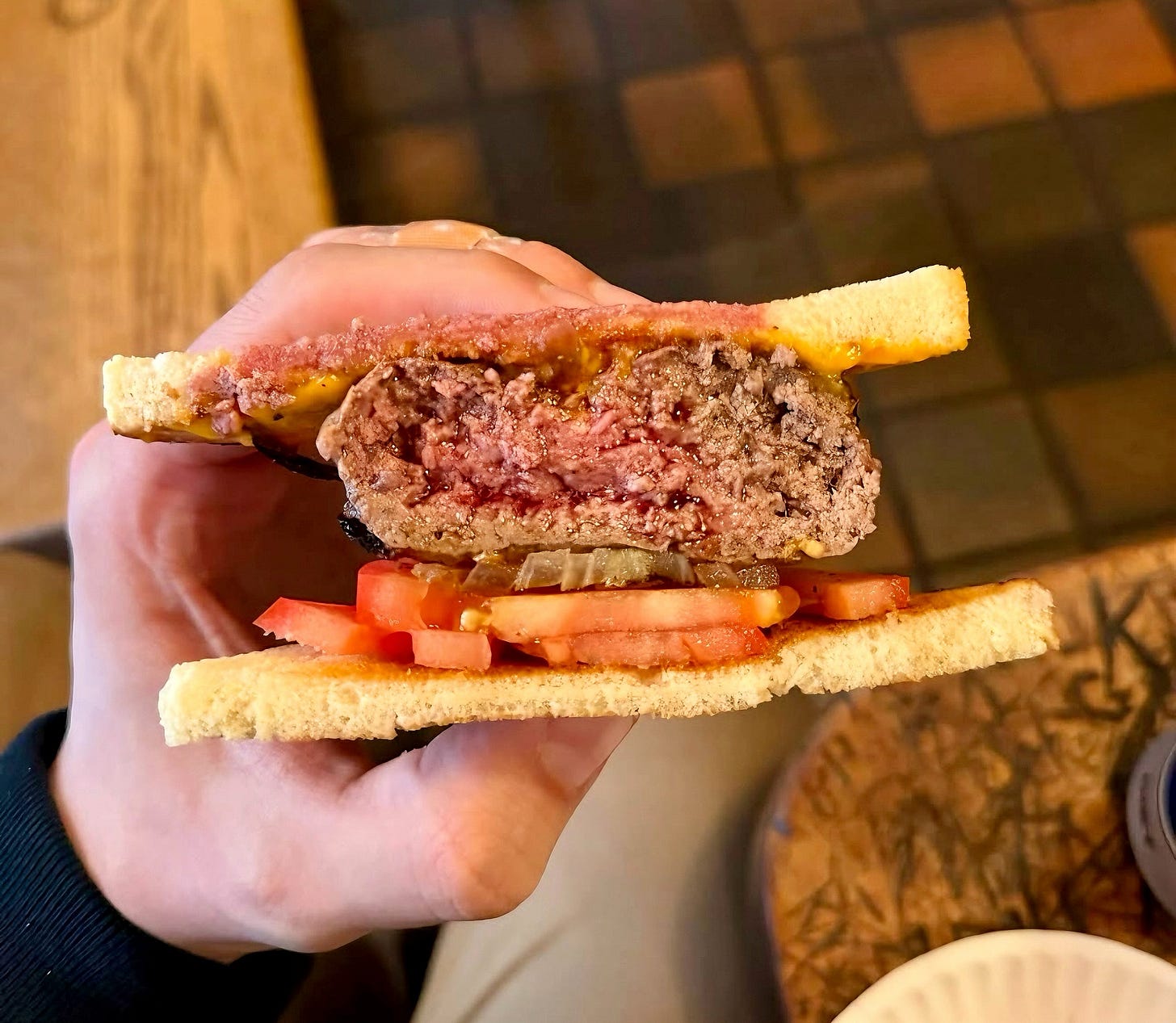
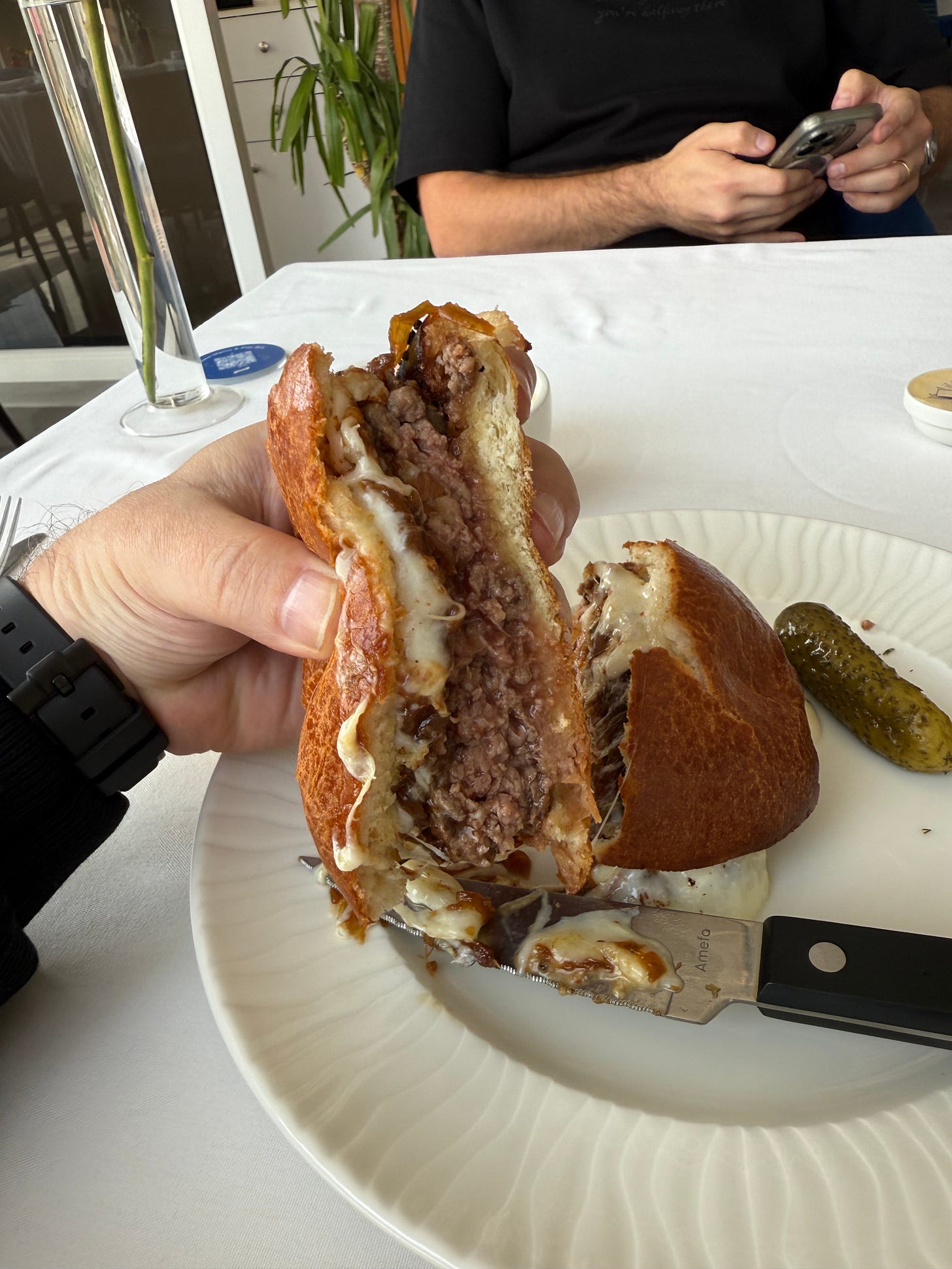
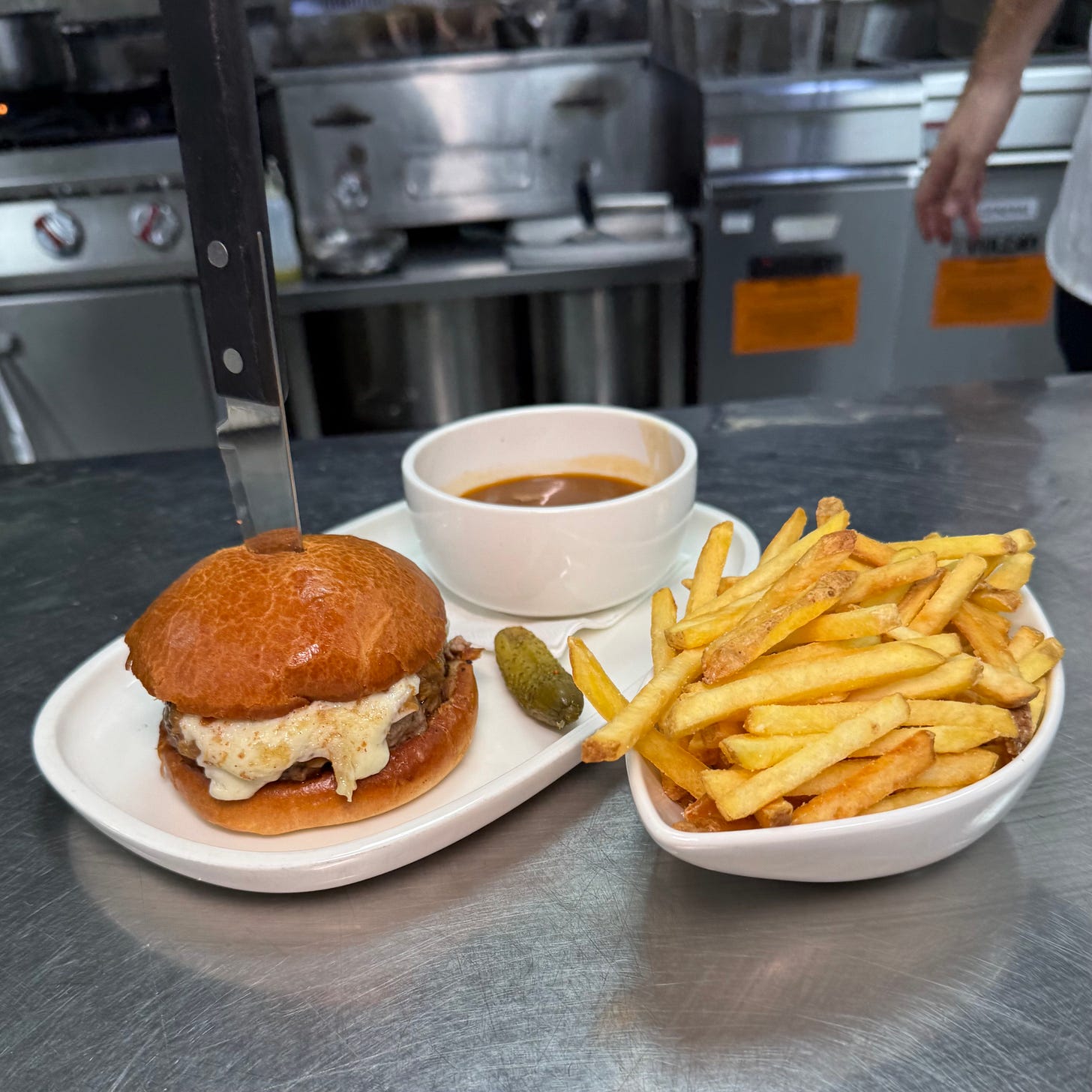
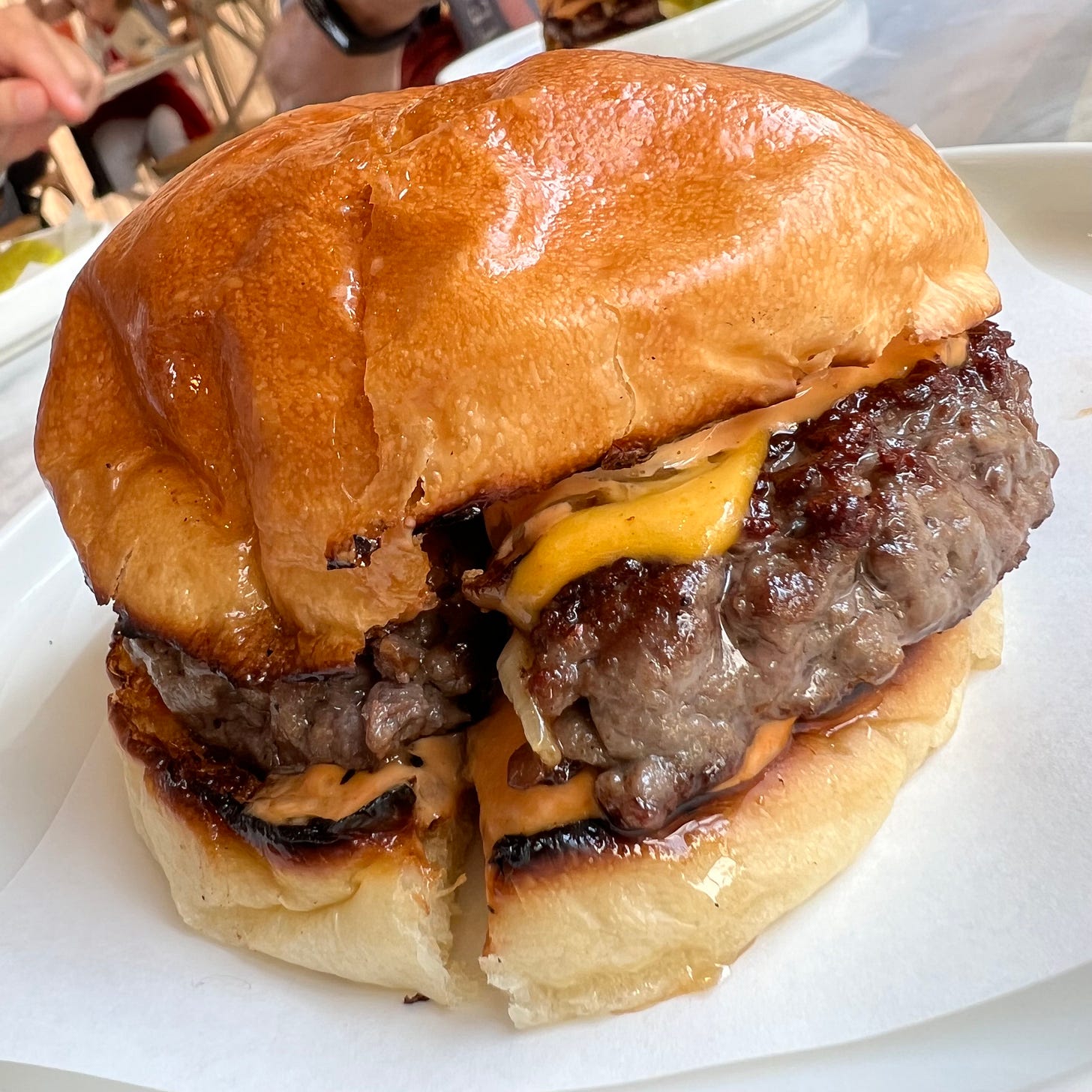
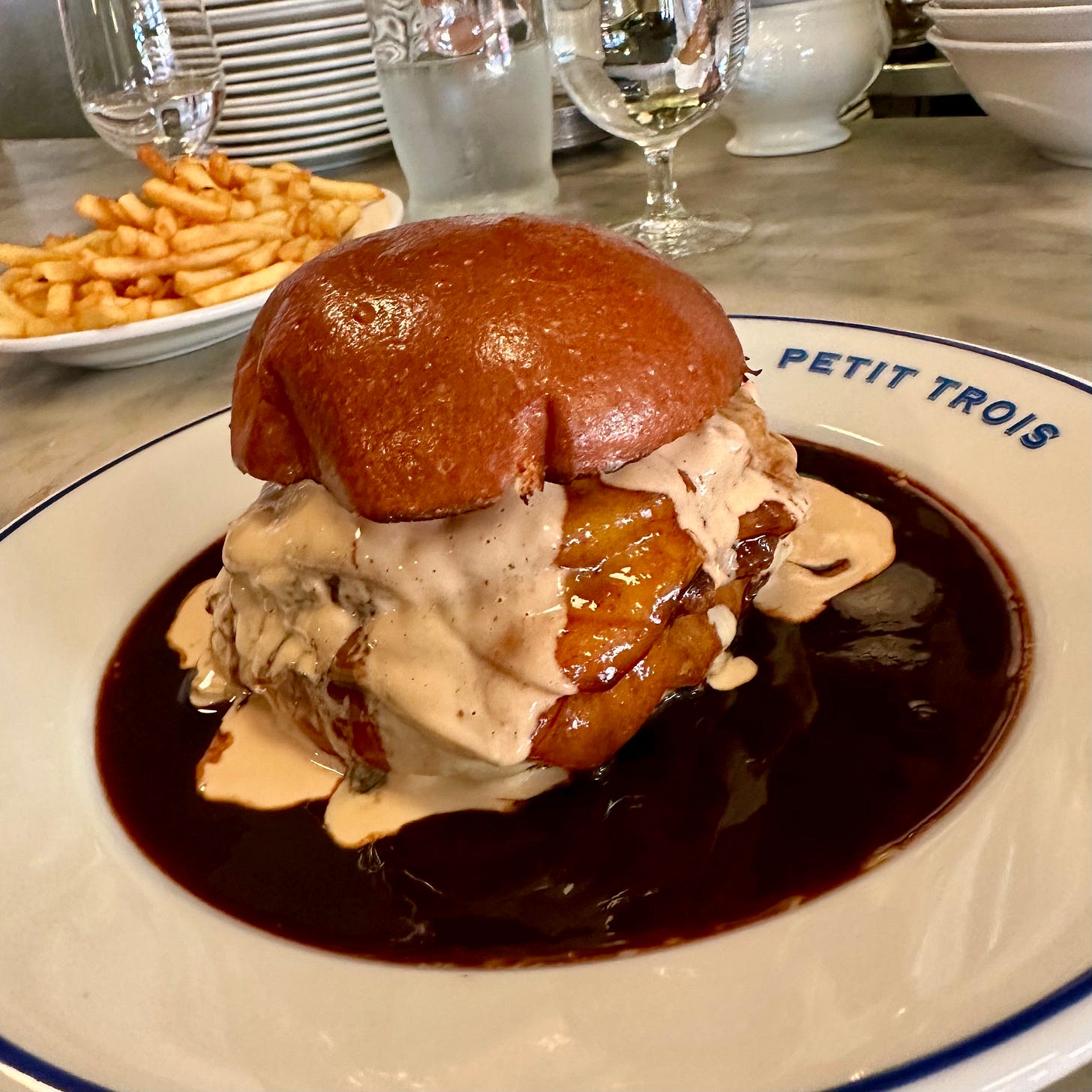
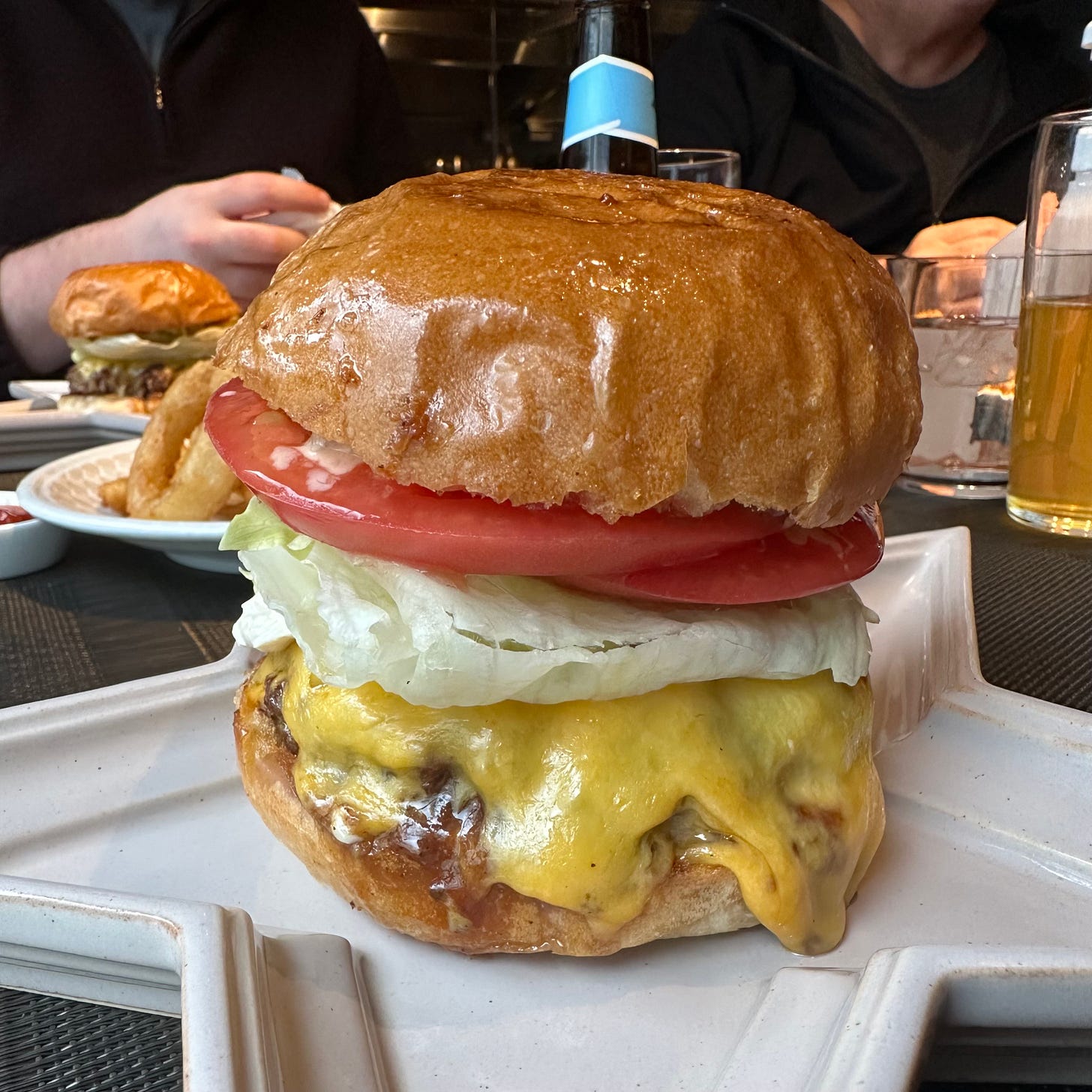
Has Phil Rosenthal ever eaten anything he didn’t instantly crown “the best”?